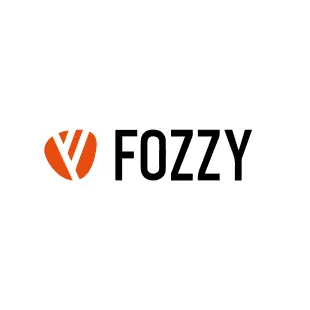10 Use Cases of RPA in Banking Industry
RPA tools and chatbots can help in handling a significant portion of this traffic. For example, the Bots can handle routine queries related to account statements and transactions, while queries that require human decision making are escalated to appropriate knowledge workers. Customer satisfaction is one of the most significant benchmarks of any business with banks being no exception. The process took time as the application had to go through various scrutiny checks such as credit checks, employment verification, and inspection before approval. A minor error from the customer or bank’s side could slow down the process and lead to unnecessary complications and delays.
The Rising Cybersecurity Risks That Will Plague Banking in 2023 – The Financial Brand
The Rising Cybersecurity Risks That Will Plague Banking in 2023.
Posted: Fri, 09 Dec 2022 08:00:00 GMT [source]
Read about the top reasons why RPA and banking & finance work together well, where it is better to apply automation and learn real use cases. Cut down your costs and free up financial resources, so you can reinvest and grow your business. Among Blue Prism clients in the financial industry, you can find Barclays Bank, ATB Financial, Ageas UK, The Co-operative Bank, and others. Financial institutions review legal documentation (Prospectus, Term Sheets, Pricing Sheets) related to new products available (known as new issues) to share with their customers.
Why is RPA important?
A number of apps offer personalized financial advice and help individuals achieve their financial goals. These intelligent systems track income, essential recurring expenses, and spending habits and come up with an optimized plan and financial tips. The predictions for stock performance are more accurate, due to the fact that algorithms can test trading systems based on past data and bring the validation process to a whole new level before pushing it live. Among the examples of artificial intelligence in banking, it is worth noting this one. What ways of optimizing your claims processing have you already considered? See the reasons for automating your processes and look through the most popular use cases.
What is an example of AI in banking?
Chatbots are examples of AI in banking that are replacing the front-desk scenes at the banks. These AI-led machines provide next level digitized and customized interactive experiences to the customers. Learn more about creating a chatbot using Python.
All these things make it a good option for large and medium-sized financial institutions. Information technology has already reached the stage where it can do activities as complex as those performed by humans, thanks to advancements in computer processing power and maturity. Although some people — including our customers and partners — believe that robots are humanoids, droids like those in Star Wars, or mechanical arms like those in Toyota factories, this is not the case.
Going Beyond Digitization with Back Office Automation
And they do all this without charging a monthly maintenance fee or requiring a minimum balance. With current test automation tools, banks typically automate 20-30% of IT application testing. The rest is executed by 100 or 1000 manual testers, costing up to $30m annually in large banks. Test Suite from UiPath can extend automation rates up to 80% within testing, reducing cost up to 50%. Test Suite does this by using UiPath automation technology to mimic human actions.

According to its annual reports, it invested over $11.4 billion in AI technology. Such a huge investment in AI by the topmost leading US bank shows its interest in technological inventions. Recent RPA trends and forecasts expect that the market for robotic technology in knowledge-work processes would reach US $29 billion by the year 2021. That is a drastic development from the US $250 million in the year 2016 when it has made its mark at first as a mainstream process-improvement tool. Let’s have an eye at the below examples of back-office processes in the Banking Industry which will be automated through RPA. A digital platform built to merge traditional banking systems with new-age digital assets such as…
Enhancing RPA with Intelligent Automation
With this solution, the bank is now able to open an account immediately while the customer is online and interacting with the bank. RPA uses algorithms to identify fraudulent transactions, flag them, and pass them on to the proper departments. In the meantime, the suspicious account can be automatically put on hold to prevent any further illegal activity. Let’s talk about the five areas to think about when transforming your financial institution with an RPA platform that is powered by artificial intelligence and machine learning. While RPA is a much lower resource-demanding than other automation results, the IT department’s purchase remains critical.
What is automation in banking sector?
Banking automation is applied with the goals of increasing productivity, reducing costs and improving customer and employee experiences – all of which help banks stay ahead of the competition and win and retain customers. Automation allows banks to connect systems and reduce manual tasks.
To really make an impact, consider mailing a welcome letter with some helpful information as well. What’s more, 41% of bank customers are now digital-only, according to the J.D. Connect with us to learn how Formstack can help you digitize what matters, automate workflows, and fix processes—all without code.
How to Implement Robotic Process Automation at Your Bank
RPA is also capable of queuing and processing account closure requests based on specific rules. Banks and other financial institutions need to comply with many legal and financial regulations. According to a recent report, over 70% of compliance officers believe automation tools like RPA could significantly improve the use of compliance resources.
Four fundamentals of workplace automation – McKinsey
Four fundamentals of workplace automation.
Posted: Sun, 01 Nov 2015 07:00:00 GMT [source]
Leverage the power of cloud computing or on-site hardware for advanced solutions, including high-volume robotic process automation in investment banking where quick decisions are key. According to our research, Blue Prism comes in third place among the finest RPA tools for big and medium-sized financial institutions. It utilizes machine learning (ML) and artificial intelligence (AI) to continually educate bots and make them more adept at anticipating end-user expectations, emulating humans, and executing instructions. Major banks like Standard Bank, Scotiabank, and Carter Bank & Trust (CB&T) use Workfusion to save time and money. Workfusion allows companies to automate, optimize, and manage repetitive operations via its AI-powered Intelligent Automation Cloud. Furthermore, robots can be tested in short cycle iterations, making it easy for banks to “test-and-learn” about how humans and robots can work together.
Commercial lending operations
Now, the use of RPA has enabled banks to go through credit card applications and dispatch cards quickly. It takes only a few hours for RPA software to scan through credit card applications, customer documents, customer history, etc. to determine whether a customer is eligible for a card. The credit card processing is now perfectly streamlined with the help of RPA software. The concept of a “digital workforce” is emerging these days due to the advancement of digital technologies.

Since Societe General Bank Brazil incorporated RPA for report generation into their processes, they automated a workflow that previously demanded six hours of employees’ working days. All of the workflows below are easily built within Formstack’s suite of workplace productivity tools. With Formstack, you can automate the processes that matter most to your organization and customers—securely, in the cloud, and without code.
Robotic process automation:
Business process automation in the banking industry takes many forms, such as robotic process automation and infrastructure automation. Artificial intelligence and machine learning are commonly used to support automation in the banking and finance industry, leading to improved digital transformation in this sector. The goal of business process automation is to increase the productivity of business processes with the help of software.
Digital workers can gather information from various back-office systems, reconcile figures (such as invoice payments or billed amounts), and act immediately to fix problems. Digital employees, for instance, can use natural language processing to analyze the text that is sent along with invoices and automatically route issues to the appropriate team. The largest banks in Japan made news for enforcing robotic process automation to save labour costs and gain functional effectiveness. Major banks like Axis Bank and Deutsche Bank have also made news for enforcing RPA to automate business processes.
Onboarding Customers
Visibly or not, Covid-19 has disrupted almost every industry globally and transformed existing ways of doing business for enterprises. Banks are transforming digitally by shifting to new business metadialog.com models and introducing fully digital banking services to keep up with the digital banking trends of 2023. Examples of cool processes include customer enquiry and dispute resolution processes.

What is an example of task automation that can help a banker?
Automating the entire AML investigation process is one of the best examples of RPA in banking. The investigation of a single case takes anywhere from 30 to 40 minutes. RPA can easily automate these repetitive and rule-based operations, resulting in a maximum reduction in process TAT.